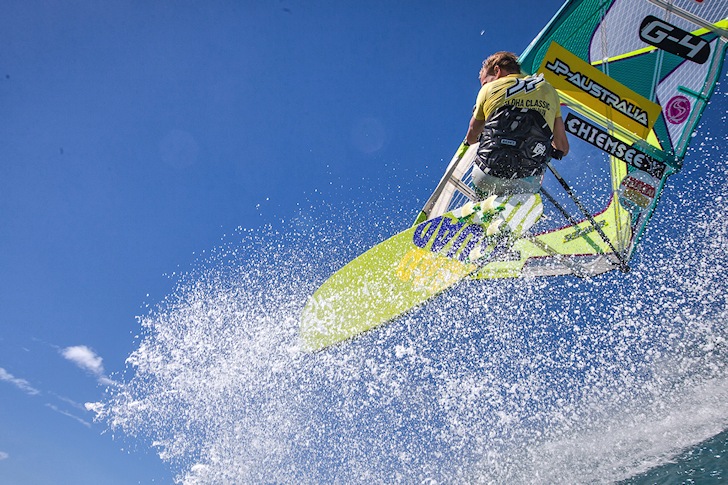Research has shown that the average risk of injury in windsurfing is between 1.2-1.5 injuries every year. It's time to get those numbers down.
Windsurfers who compete in wave and slalom disciplines have the highest risk of injury (up to 2.0 injuries/person/year), whereas recreational sailors have an average of 1.2 injuries per year.
Health promoter and windsurfer Henrik Beyer highlights physical fitness in preventing windsurfing injuries and calls for industry involvement.
"Physical strength and conditioning are essential in preventing sports injuries," underlines Beyer.
"Sport specific programs can decrease the risk and severity of the injury and help prevent re-injury. There are a few muscle groups that should be trained to prevent these problems."
There are four muscles and stabilizing tendons that cover the top of humerus (rotator cuff) that are critical to train in order to minimize the risks of injury in case of a serious crash or wipeout.
The shoulder joints are exposed to shoulder luxation when the windsurfer has outstretched arms - for example, griping of boom - while crashing.
The ligaments in the knee joint are also exposed when sailing and should be exercised to avoid unwanted injuries.
Other relevant muscle groups are those around the shoulder blades and ankles as well as the corset of muscles surrounding the back and abdomen.
Prevention is Critical
Uphauling the rig with a hunched back is tremendously stressful for the lumbar spine and lower back.
It is likely that the pressure on the spinal discs while uphauling can increase up to nine times if legs are unbent and the back is hunched.
This means an increased risk of disc herniation, especially if the corset muscles are weak.
"It is clear that physical fitness sets the ground for injury prevention," considers the author of "Health & Fitness for Windsurfing."
"However, windsurfing injuries do not only affect the individual sailor. It's also in the best interest of the windsurfing industry to work to prevent injuries,"
Windsurfing injuries can damage the interests of the industry itself by diminishing sailor's performance in competition and hinder investments in promising windsurfers.
Injuries also reduce the health benefits that one can expect from windsurfing and keep people from learning to windsurf or even force them to stop.
The economic burden of windsurfing-related injuries is unknown.
However, research shows that sports injuries account for about 14 percent of all medically treated injuries in Europe.
There are estimates that 40-50 percent of health gains from sports participation are lost due to injuries.
"Windsurfing schools can spread injury prevention information," concludes Henrik Beyer.
"Associations and major players in the industry should increasingly work together to develop programs and effective measures for reducing injuries in windsurfing."
